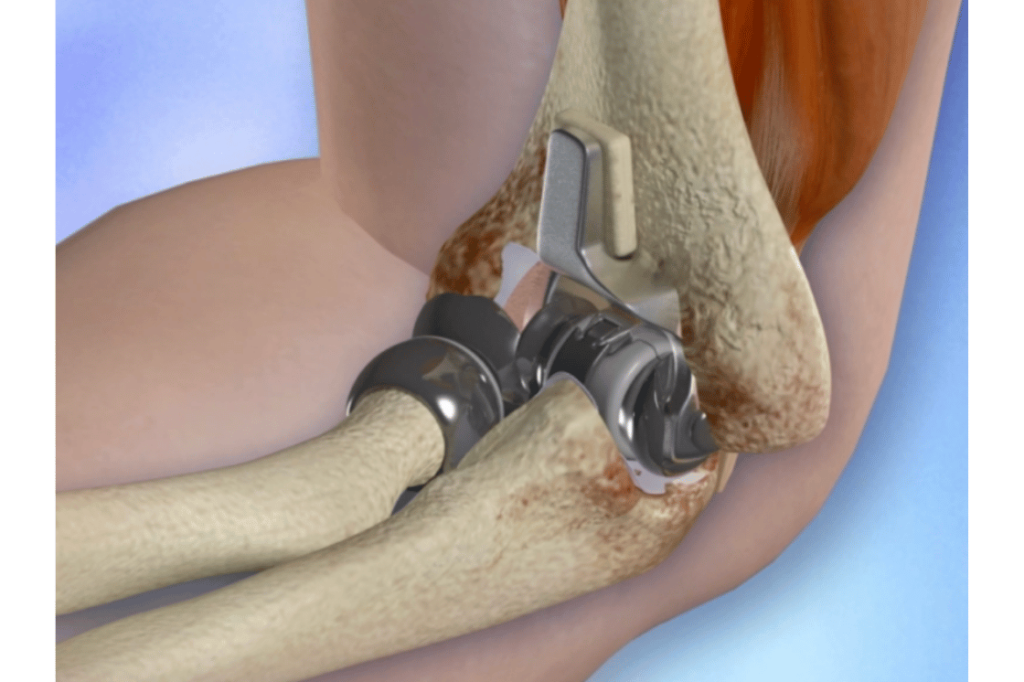Elbow replacement is a surgical treatment method used to restore joint function, particularly following severe osteoarthritis (joint calcification), rheumatoid arthritis, or serious fractures. This surgery is performed by removing the damaged bone and cartilage surfaces and implanting a specially designed artificial joint (a prosthesis) in their place. The implanted artificial joint allows the arm to maintain its flexion (bending) and extension (straightening) movements as naturally as possible.
The elbow is one of the body’s most complex joints and is central to many fine motor movements in daily life, from writing to eating. Therefore, the loss of function that occurs after advanced osteoarthritis or a fracture can lead to significant quality of life problems.

Total elbow arthroplasty is generally recommended in the following situations:
The goal after surgery is to reduce pain, restore the joint’s range of motion, and make daily life activities more comfortable. With appropriate patient selection, meticulous surgical technique, and consistent rehabilitation, the outcomes are highly satisfactory.

Surgery Duration: Approximately 90–120 minutes
Type of Anesthesia: General anesthesia or a nerve block
Surgical Method: Open surgery (with an incision at the back of the elbow) to place the special prosthesis
First day: 3–5
First week: 2–4
After 2nd week: 1–2
A hospital stay of 1–2 days is generally required
First 2 weeks: The elbow is rested in a splint
Weeks 2–4: Controlled passive exercises are started
Weeks 5–6: Active movements and muscle strengthening
Weeks 8–12: Return to daily life
Months 3–6: Full functional recovery and prosthesis adaptation are achieved
First dressing change: Day 2
Wound site check: Week 1
Suture removal (if necessary): Day 10
? It is suitable for patients experiencing loss of function and pain due to advanced osteoarthritis, rheumatoid arthritis, or non-repairable fractures. It is generally preferred for older individuals and those with a moderate level of physical activity.
With proper use, a lifespan of 15 years or more can be expected. It is important to avoid overloading the joint.
No. Lifelong avoidance of heavy lifting is recommended after elbow replacement. Daily activities can be performed, but weight limits must be observed.
Regular exercises are required to maintain the elbow's range of motion and regain muscle strength. In most cases, the exercises we provide to our patients are sufficient and safe when performed by them. On rare occasions, if it is thought that the expected range of motion is not being achieved during follow-ups, assistance from physical therapy may be sought.
In rare cases, loosening of the prosthesis can occur. In this situation, a revision surgery (a second replacement procedure) may be necessary.